Stanley BC209 Handleiding
Bekijk gratis de handleiding van Stanley BC209 (8 pagina’s), behorend tot de categorie Acculader. Deze gids werd als nuttig beoordeeld door 77 mensen en kreeg gemiddeld 4.3 sterren uit 39 reviews. Heb je een vraag over Stanley BC209 of wil je andere gebruikers van dit product iets vragen? Stel een vraag
Pagina 1/8

16
AUTOMATIC BATTERY CHARGER/MAINTAINER
INSTRUCTION MANUAL
CARGADOR / MANTENEDOR DE BATERÍAS
AUTOMÁTICO
MANUAL DE INSTRUCCIÓN
SAVE THIS INSTRUCTION MANUAL FOR FUTURE REFERENCE.
CONSERVE ESTE MANUAL PARA FUTURAS CONSULTAS.
© 2014 Baccus Global LLC
Boca Raton, FL 33432
(877) 571-2391
BC209
English page 3
Español pagina 10
x
BC
BC209_1.5Amp_MaualENSP_061714.indd 16-1 6/17/2014 6:07:40 PM

2 3
FEATURES
1. AC Power Cord
2. Charging / Charged LED
3. Reverse Polarity Indicator
4. Battery Clamps
5. Double Barrel Charger Connector (connects to terminal rings,
clamps or vehicle adapter plug)
6. 12 Volt DC Adapter Plug
7. Battery Terminal Rings
8. Magnetic Discs (exposed to show detail)
9. Mounting Bracket
10. Mounting Bracket
11. Hanging Hook
CARACTERÍSTICAS
1. Cuerda de la CA
2. Indicador LED de carga / cargado
3. Indicador de polaridad reversa
4. Pinzas de batería
5. Conectador doble del cargador del barril (conecta con los
anillos terminales, las pinzas o el adaptador de 12V CC)
6. Enchufe del adaptador de 12V CC
7. Terminales de juntas tóricas del batería
8. Discos magnéticos (expuesto al detalle de la demostración)
9. Soporte de montaje
10. Soporte de montaje
11. Gancho colgante
This device complies with part 15 of the FCC rules. Operation is subject to the following two conditions: (1) this device may
not cause harmful interference, and (2) this device must accept any interference received, including interference that may
cause undesired operation.
This equipment has been tested and found to comply with the limits for a Class B digital device, pursuant to part 15 of the
FCC Rules. These limits are designed to provide reasonable protection against harmful interference in a residential installation.
This equipment generates, uses and can radiate radio frequency energy and, if not installed and used in accordance with the
instructions, may cause harmful interference to radio communications. However, there is no guarantee that interference will
not occur in a particular installation. If equipment does cause harmful interference to radio or television reception, which can
be determined by turning the equipment off and on, the user is encouraged to try to correct the interference by one or more
of the following measures:
• Reorient or relocate the receiving antenna.
• Increase the separation between equipment and receiver.
• Connect the equipment into an outlet on a circuit different from that to which the receiver is connected.
• Consult the dealer or an experienced radio/TV technician for help.
Changes or modifications not approved by the party responsible for compliance could void user’s authority to operate the
equipment.
Este dispositivo cumple con la parte 15 de las normas de la Comisión Federal de Comunicaciones de Estados Unidos (FCC). La
operación está sujeta a las dos condiciones siguientes: (1) este dispositivo no puede causar interferencia perjudicial y (2) este
mecanismo debe aceptar cualquier interferencia recibida, incluida la in-terferencia que puede provocar una operación no
deseada.
Este equipo ha sido probado y se encontró que cumple con los límites para dispositivo digital Clase B, según la parte 15 de
las normas de la FCC. Estos límites están diseñados para brindar protección razonable contra interferencia perjudicial en una
instalación residencial. Este equipo genera, usa y puede irradiar energía en frecuencia de radio y, si no se instala y se usa de
acuerdo con las instrucciones, puede provocar interferencia perjudicial en las comunicaciones de radio. Sin embargo, no hay
garantía de que la interferencia no ocurra en una instalación en particular. Si el equipo provoca interferencia perjudicial en la
recepción de radio o televisión, lo que se puede determinar al apagar y encender el equipo, el usuario debe tratar de corregir
la interferencia mediante una o más de las siguientes medidas:
• Cambiar la orientación o la ubicación de la antena de recepción.
• Aumentar la separación entre el equipo y el receptor.
• Conectar el equipo a un tomacorriente sobre un circuito diferente de aquel al que está conectado el receptor.
• Consultar al vendedor o pedir la ayuda de un técnico en radio y televisión con experiencia.
Los cambios o las modificaciones no aprobados por el partido responsable de conformidad podían anular la autoridad del
usuario para funcionar el equipo.
FEATURES
CARACTERÍSTICAS
1
32
4
5
9
10
11
6
7
8
BC209_1.5Amp_MaualENSP_061714.indd 2-3 6/17/2014 6:07:40 PM

4 554
SAFETY GUIDELINES / DEFINITIONS
DANGER: Indicates an imminently hazardous situation which, if not avoided, will result in death or serious injury.
WARNING: Indicates a potentially hazardous situation which, if not avoided, could result in death or serious injury.
CAUTION: Indicates a potentially hazardous situation which, if not avoided, may result in minor or moderate injury.
CAUTION: Used without the safety alert symbol indicates potentially hazardous situation which, if not avoided, may result in property
damage.
RISK OF UNSAFE OPERATION. When using tools or equipment, basic safety precautions should always be followed to reduce the risk
of personal injury. Improper operation, maintenance or modification of tools or equipment could result in serious injury and property
damage. There are certain applications for which tools and equipment are designed. Manufacturer strongly recommends that this product
NOT be modified and/or used for any application other than for which it was designed. Read and understand all warnings and operating
instructions before using any tool or equipment.
IMPORTANT SAFETY INSTRUCTIONS
READ ALL INSTRUCTIONS
WARNING: Read all instructions before operating battery charger/maintainer. Failure to follow all instructions listed
below may result in electric shock, fire and/or serious injury.
GENERAL SAFETY WARNINGS AND INSTRUCTIONS
WARNING: This product or its power cord contains lead, a chemical known to the State of California to cause cancer and birth defect
or other reproductive harm. Wash hands after handling.
• Avoid dangerous environments. Don’t use battery chargers in damp or wet locations.
• Keep children away. Keep away from children. This is not a toy!
• Store indoors. When not in use, battery chargers should be stored indoors in dry, and high or locked-up places – out of reach of
children.
• Unplug the battery charger when not in use.
SPECIFIC SAFETY INSTRUCTIONS FOR POWER CORDS
• Don’t abuse cord. Never carry appliance by cord or yank it to disconnect from receptacle. Keep cord from heat, oil, and sharp edges.
Pull by plug rather than cord when unplugging the unit.
• Ground Fault Circuit Interrupter (GFCI) protection should be provided on the circuits or outlets to be used. Receptacles are available
having built in GFCI protection and may be used for this measure of safety.
Extension cords:
WARNING: An extension cord should not be used unless absolutely necessary. Use of improper extension cord could result in a risk of
fire and electric shock. If an extension cord is used, make sure that the pins of the extension cord are the same number, size and shape as
those in the charger.
• Make sure your extension cord is in good condition. When using an extension cord, be sure to use one heavy enough to carry the
current your product will draw. An undersized cord will cause a drop in line voltage resulting in loss of power and overheating. The
following table shows the correct size to use depending on cord length and nameplate ampere rating. If in doubt, use the next heavier
gage. The smaller the gage number, the heavier the cord.
Recommended Minimum AWG Size for Extension Cords for Battery Chargers
AC Input Rating American Wire Gage (AWG) Size of Cord
Amperes Length of Cord, feet (m)
Equal to or But less 25 (7.6) 50 (15.2) 100 (30.5) 150 (45.6)
greater than than
0 2 18 18 18 16
2 3 18 18 16 14
3 4 18 18 16 14
4 5 18 18 14 12
5 6 18 16 14 12
6 8 18 16 12 10
8 10 18 14 12 10
10 12 16 14 10 8
12 14 16 12 10 8
14 16 16 12 10 8
16 18 14 12 8 8
18 20 14 12 8 6
• Power Cord Safety:
This appliance has a polarized plug (one blade is wider than the other) as a safety feature. This plug will fit into a polarized outlet
only one way. If the plug does not fit fully into the outlet, reverse the plug. If it still does not fit, contact a qualified electrician. Do not
attempt to defeat this safety feature.
SPECIFIC SAFETY INSTRUCTIONS FOR BATTERY CHARGERS
• This unit was designed for household use only.
• Use of accessories and attachments: The use of any accessory or attachment not recommended by manufacturer for use with this
battery charger could be hazardous.
• Stay alert. Use common sense. Do not operate this equipment when you are tired or impaired.
• Check for damaged parts. A part that is damaged should be properly repaired or replaced by manufacturer before further use unless
otherwise indicated elsewhere in this instruction manual.
• Do not operate the battery charger near flammable liquids or in gaseous or explosive atmospheres. Motors may spark, and the sparks
might ignite fumes.
WARNING: TO REDUCE THE RISK OF ELECTRIC SHOCK:
• Never immerse the battery charger in water or any other liquid, or use when wet.
WARNING: BURST HAZARD: Do not use the unit for charging dry-cell batteries that are commonly used with home appliances. These
batteries may burst and cause injury to persons and damage property. Use the unit for charging/boosting a LEAD-ACID battery only. It is
not intended to supply power to a low-voltage electrical system other than in a starter-motor application.
WARNING: RISK OF EXPLOSIVE GASES:
• Working in the vicinity of a lead acid battery is dangerous. Batteries generate explosive gases during normal battery operation. For this
reason, it is of the utmost importance that each time before using the battery maintainer you read this manual and follow instructions
exactly.
• To reduce the risk of battery explosion, follow these instructions and those published by the battery manufacturer and manufacturer of
any equipment you intend to use in the vicinity of the battery. Review cautionary markings on these products and on the engine.
• This equipment employs parts (switches, relays, etc.) that produce arcs or sparks. Therefore, if used in a garage or enclosed area, the unit
MUST be placed not less than 18 inches above the floor.
• THIS UNIT IS NOT FOR USE BY CHILDREN AND SHOULD ONLY BE OPERATED BY ADULTS.
WARNING: TO REDUCE THE RISK OF FIRE:
• Do not operate near flammable materials, fumes or gases.
• Do not expose to extreme heat or flames.
• If the vehicle accessory outlet fuse opens (blows) when plugging in this battery charger, do not use this battery charger with this vehicle
accessory outlet:
– Do not repeatedly replace the fuse.
– Do not replace the vehicle accessory outlet fuse with one of a higher amperage rating.
– Never attempt to patch the fuse with tin foil or wire.
Any of these actions may cause serious electrical damage and/or a fire.
CAUTION: TO REDUCE THE RISK OF INJURY OR PROPERTY DAMAGE:
• This charger is not designed for use with every make, manufacture or model of engine. Use only with 12 volt systems.
• NEVER ATTEMPT TO CHARGE A FROZEN BATTERY.
• Do not charge the battery while the engine is operating.
• Stay clear of fan blades, belts, pulleys, and other parts that can cause injury to persons.
• Vehicles that have on-board computerized systems may be damaged if vehicle battery is jump-started. Before jump-starting, read the
vehicle’s owner’s manual to confirm that external-starting assistance is suitable.
• When working with lead acid batteries, always make sure immediate assistance is available in case of accident or emergency.
• Always have protective eyewear when using this product: contact with battery acid may cause blindness and/or severe burns. Be aware
of first aid procedures in case of accidental contact with battery acid.
• Have plenty of fresh water and soap nearby in case battery acid contacts skin.
• If battery acid contacts skin or clothing, wash immediately with soap and water for at least 10 minutes and get medical attention
immediately.
• Never smoke or allow a spark or flame in vicinity of vehicle battery, engine or battery maintainer.
• Remove personal metal items such as rings, bracelets, necklaces and watches when working with a lead acid battery. A lead acid battery
can produce a short circuit current high enough to weld a ring, or similar metal object, to skin causing a severe burn.
• Never allow battery acid to come in contact with this unit.
• Do not operate this unit in a closed area or restrict ventilation in any way.
• Always turn the battery charger off by unplugging it when not in use.
• DO NOT OPEN THE BATTERY CHARGER — there are no user-serviceable parts inside. Opening the battery charger will void
manufacturer’s warranty.
• Operate battery charger only as described in this Instruction Manual.
BC209_1.5Amp_MaualENSP_061714.indd 4-5 6/17/2014 6:07:40 PM
Product specificaties
| Merk: | Stanley |
| Categorie: | Acculader |
| Model: | BC209 |
Heb je hulp nodig?
Als je hulp nodig hebt met Stanley BC209 stel dan hieronder een vraag en andere gebruikers zullen je antwoorden
Handleiding Acculader Stanley

21 December 2022

20 December 2022

15 Maart 2023

20 Januari 2023

9 Januari 2023

24 December 2022

18 December 2022

30 November 2022

18 November 2022
Handleiding Acculader
- Toptron
- Bosch
- Load Up
- Anker
- Panasonic
- Voltcraft
- Silvercrest
- Topcraft
- Efoy
- Fein
- Webasto
- Ergotron
- Dedra
- Eufab
- Apa
Nieuwste handleidingen voor Acculader
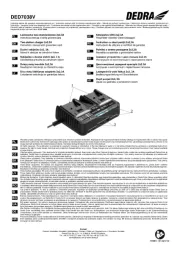
15 Juli 2025
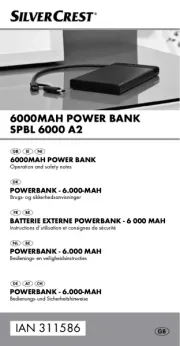
5 Juli 2025
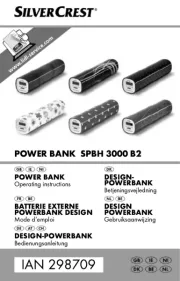
4 Juli 2025
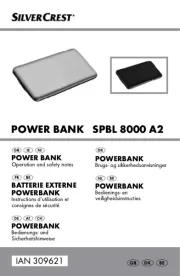
4 Juli 2025
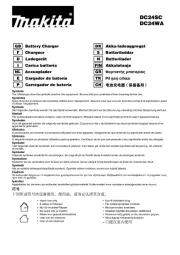
1 Juli 2025

2 April 2025
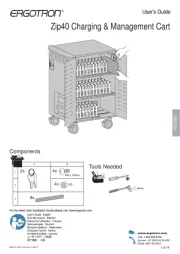
2 April 2025

2 April 2025
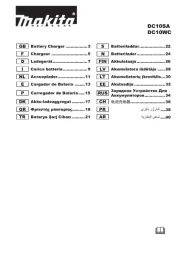
29 Maart 2025
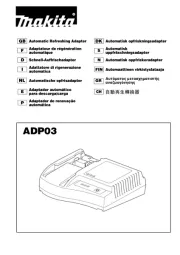
28 Maart 2025